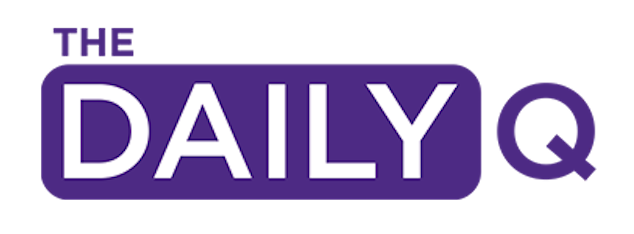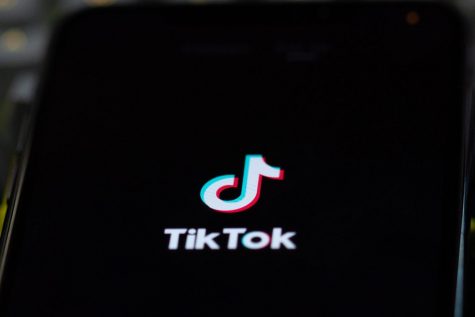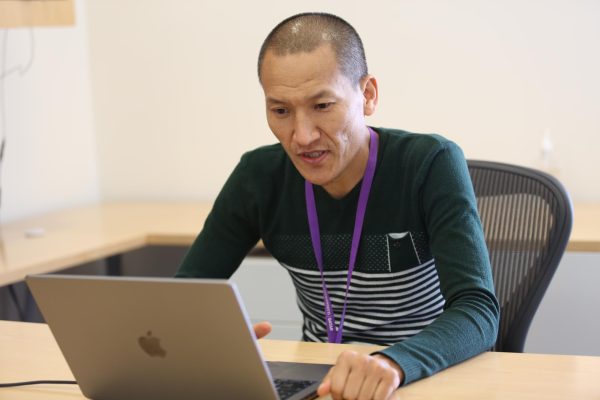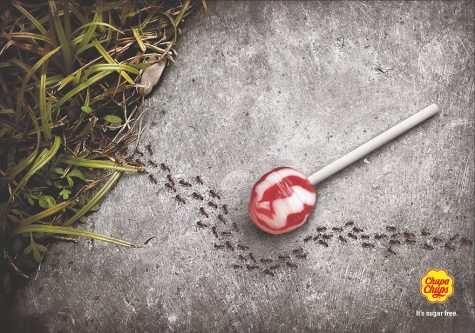Scatterbrain: The inner workings of ADHD minds
There is a consensus that mornings are evil—or at least there should be. You’re groggy, maybe you didn’t get enough sleep, and the cruel world has yanked you from paradise. Most mornings, I disagree with the urgency of my alarm clock. “Do I really need an hour before I leave the house? I can make it to class in 30 minutes, so 30 minutes it is.”
But I really do need that hour, if not more. ADHD dulls your sense of urgency. I’ll take a shower, make breakfast, eat, get dressed. So far, I’m on track, but then I remember that there’s a long gap between my classes, and I’d like to listen to music. Where are my earphones? They’re in a drawer with an assortment of random stuff. No, not that drawer, the other one. While I’m at it, let me find my spare car key. Also, I haven’t seen my Swiss Army knife in a while, maybe I should look for it. And just like that, my preemptive strike at not being late to class is sabotaged by inattention and impulse.
ADHD is an acronym that stands for Attention Deficit Hyperactive Disorder. As the name suggests, ADHD is when a person exhibits inattention and/or hyperactivity. Another symptom that isn’t in the name is impulsivity.
Now, you may have already encountered a person with the condition, or you might have it yourself. Chances are that if you don’t have it, you’re misinformed about its symptoms. ADHD people are not ballistic ricocheting cannonballs of unadulterated energy as they are sometimes depicted on television. I myself am nowhere near hyperactive (unless I decide to drink coffee. If I do, buckle up people!). I am more of the blank-stare-and-contemplate-becoming-a-skydiving-instructor-during-important-events type of person.
People with ADHD have varying symptoms. There are three different types of ADHD. ADHD-PI means that a person is ‘primarily Inattentive’. A primarily inattentive person most likely finds it hard to organize, keep time, remember details and retain focus through long tasks. They may lose things, forget appointments, and become distracted quickly. ADHD-PH/I means that a person is ‘Primarily Hyperactive/Impulsive’. A primarily hyperactive/impulsive person may fidget excessively, interrupt others in conversations and activities, blurt out answers out of turn or when not being spoken to, talk excessively, and move excessively in inappropriate situations. ADHD-C means that a person has ‘combined’ symptoms; they exhibit both hyperactive/impulsive symptoms, along with inattentiveness. My diagnosis is ADHD-PI. But what racked my brain more than the diagnosis was how I had gotten ADHD in the first place.
In searching for the triggers of ADHD in the brain, research has found that the brains of subjects with ADHD matured later in their childhood. Furthermore, they produced smaller quantities of two hormones than a neurotypical person: dopamine, and norepinephrine. Dopamine assists in movement, memory, learning, reward, behavior, cognition, attention, sleep, and mood. A brain deficient in dopamine may experience inattention, behavioral problems, mood problems, and learning impediments. Also, since dopamine is responsible for pleasure, a person who lacks dopamine can be severely under stimulated while performing tasks like homework and may opt to procrastinate. Norepinephrine, meanwhile, assists in problem-solving, planning, reasoning and impulse control. A lack of it causes problems in all those areas.
I had been told by almost all of my teachers that I was ‘smart but lazy.’ The smart part satisfied me, and after a while, I began to agree with lazy.
Despite all the information I’ve learned about the condition, ADHD is still tricky for me. As far as I can remember, I’ve always hated sitting in one place for way too long. As a kindergartener, I would cry to no end when I had to write sentence after sentence to improve my handwriting. In elementary school, I’d find out about homework only when the teacher would say it was time to turn it in. In middle school, achieving an A grade was the golden dream, locked away in a treasure chest, far out of reach for my mental capacity. In high school, I developed a system called W.O.A.H.: Work Only After Hyperventilating. Whenever I received an assignment, the task sheet got shoved to the bottom of my bag. The night before the assignment, I’d find the sheet. I’d sweat, and shake, and I’d Work Only After Hyperventilating. I’d show up to class with bloodshot eyes, but I didn’t care as long as the grade was good. I rationalized that this method of working was completely normal and that I was just a lazy person. I had been told by almost all of my teachers that I was ‘smart but lazy.’ The smart part satisfied me, and after a while, I began to agree with lazy. This all stopped in university. After a few semesters of using WOAH, I realized that it wasn’t practical to pull all-nighters most days of the week. I decided to kick my ‘lazy’ habits and become responsible.
I couldn’t.
I began by trying to start homework as soon as it was assigned. I attempted to finish my readings a whole day before they were due. I tried to spend every moment of class time paying attention. What ended up happening? I slept in class more often and boredom eventually won over all my attempts. I would get fed up with work so quickly that sometimes the deadline would come and pass and I wouldn’t care. I knew I had a problem. I was sure I was putting in A-grade effort into my work, but the result was a plummeting GPA. I would look around at my peers who made succeeding look so easy, while I was trying to swim through concrete. I was embarrassed and ashamed of myself. I began to harbor very negative thoughts about myself. I became anxious, emotional, and easily overwhelmed. When I finally tried to find help, I was diagnosed with mild anxiety along with severe ADHD-PI. I was prescribed medicine that worked until it didn’t. I had read forums of people who had taken ADHD medicine that had turned their lives 180 degrees. But mine was flipped an entire 360 but with added potholes. Basically, I was suffering side effects with no benefits.
The road to diagnosis also wasn’t a simple one. As first, I was thought to have anxiety and depression. I explained to the doctor that this is a cyclical thing for me. First, it starts with inattentiveness: I fail to perform well, which leads to an anxiousness surrounding academic work. If I remain anxious for a long time, I lose motivation and I no longer want to do anything, hence, the depression. The doctor did not listen to what I had to say and prescribed me antidepressants.
I became apathetic, tired, and unresponsive to social settings. All I ever wanted to do was sleep.
I tend to imagine depression and anxiety as a frequency chart with peaks and troughs. The lows signal depressive episodes and the peaks signal anxious episodes. People who have both depression and anxiety would have an erratic chart with high peaks and low troughs that contrast greatly. An antidepressant would decrease the amplitude of these to those of a person who doesn’t have depression and anxiety. Since my depression and anxiety were contingent and not inherent, the antidepressant smoothed out even my normal peaks and troughs. I became apathetic, tired, and unresponsive to social settings. All I ever wanted to do was sleep.
After arguing with my doctor, he placed me on two other medicines aimed at battling a depression that I did not have. The depression diagnosis never made sense to me as I was seeking help for my inattentiveness, and from my personal research, I most likely had ADHD. While I did follow my doctor’s orders and took the medicine, I had to take matters into my own hands eventually and see another doctor. After taking some tests and evaluations for ADHD, I was diagnosed with a severe case of ADHD-PI.
You might assume that this would have made me upset, but it didn’t. It was a weight off my shoulders. The diagnosis explained so much of the anguish that had gone into my academic career. When I was prescribed medicine for ADHD, I thought I would climb to the very top of the academic ladder. Indeed, the first few weeks, the medicine worked like a charm. I would be on top of assignments from the moment they were assigned. I took notes like a stenographer. Aside from the dry mouth and cold hands side effects, I was on a roll. Over the weeks, however, the effectiveness wore off, and I started having bouts of rage. My temper was now shorter than my attention span. I then visited online forums about others with the same problem and learned that not everyone responds well to medication.
Treatment is not always a walk in the park. Whereas some people quickly determine the correct treatment plan for themselves, others have a hard time. I stopped using ADHD medicine and decided to measure what exacerbated my symptoms, and what calmed them. Nowadays, I focus mainly on behavioral changes. If I have too much sugar, my focus virtually disappears and so does the daily routine that I built for myself. Not enough sleep does the same. ADHD sneaks up on you, so I’m trying to keep my scatterbrain alert. For adults with ADHD, it is recommended that they stick to routines, use lists as reminders and keep notes in places that they can easily see, label everything, keep all of their belongings in very accessible space.
If the symptoms sound familiar to you, do not hesitate to research. The internet offers a plethora of information, some of it reputable and some not. A quick trip to your university health and wellness counselor should be a priority, as they will help determine whether or not to further investigate your concerns. Lastly, you can take this test as a preliminary measure to determine whether you have ADHD symptoms or not.
It was definitely a scary situation when I was just learning about ADHD and comparing my symptoms, but ultimately the experience has freed me to become so much more than I previously thought I could. The notion that I am lazy faded away. If I operate with the consideration that I have ADHD-PI, I can get much more work done. Whether you have ADHD or not isn’t in your control, but you definitely control how much it affects you. Also, people like Richard Branson, Jim Carrey, Michael Phelps, David Blaine, Justin Timberlake, will.i.am, and Ty Pennington have ADHD. So, it may not be such a bad thing after all.
















